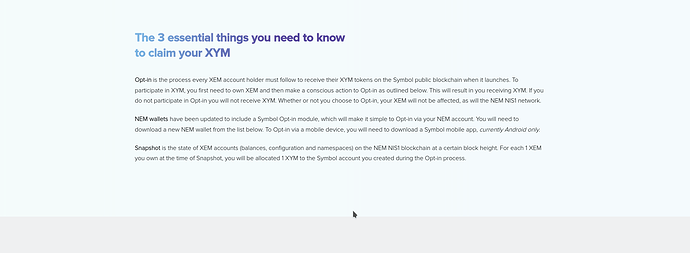Trying to wrap a few questions into one post
Pre-Launch Opt In - reason for 100 XEM threshold
-
The nemesis/genesis block has a limited amount of space, allowing smaller accounts to opt in risks bloating the block to the point that bigger accounts may not be included in block 0 which has multiple potential knock on effects (harvesting, supernodes, namespaces, multi-sig configuration etc)
-
Setting a minimum threshold also makes it more expensive to initiate a spam disruption by placing a barrier on someone for example opting in 100,000 “dust” accounts with tiny balances
-
When 100 XEM was selected, it was expected to be necessary for namespaces owners to need to pay for 1 year’s fees (~20 XEM/XYM) so setting it above that made namespace opt in safer, this has since been removed by a minor enhancement allowing namespaces to be created for 0 rental fee in the nemesis/genesis block
Post-Launch Opt In - reason for 100 XEM threshold
-
Setting a minimum threshold helps avoid spam of the post launch opt in process and makes it easier to ignore spam attempts
-
The holding of each balance on-chain takes up an amount of resource in terms of storage, memory etc on nodes, it is preferable at a technical level to have only “real” accounts at the start of the chain to reduce chain bloat in the early days
Why was 100 XEM the number selected?
It was a combination of:
-
A number higher than 20 was required for namespaces, and 100 is a nice round, easy number (no longer relevant, see comment above, but was at the time of opt in opening)
-
To be significant enough to deter spamming, but low enough to not be exclusionary. When the number was selected the price was ~$0.05 so represented an account with approx $5 of XEM in it. Changing a number to 10 XEM for example would have been 50c. In terms of spam protection, issuing 10,000 spurious requests costs $50k or $5k with the two different options (100 vs 10) this was also factored in. There is no technical reason for saying 10, 50, 100 XEM from a spam protection perspective
-
The number of accounts with less than 100 XEM is significant in number but not volume held (~114k accounts according to the rich list last time I looked) which is 114k accounts that hold less than $10 of XEM at current prices and if each opts in contribute to the size of the chain. Of course if they are combined into larger accounts, or held on exchanges which are opting in, then they also become included.



